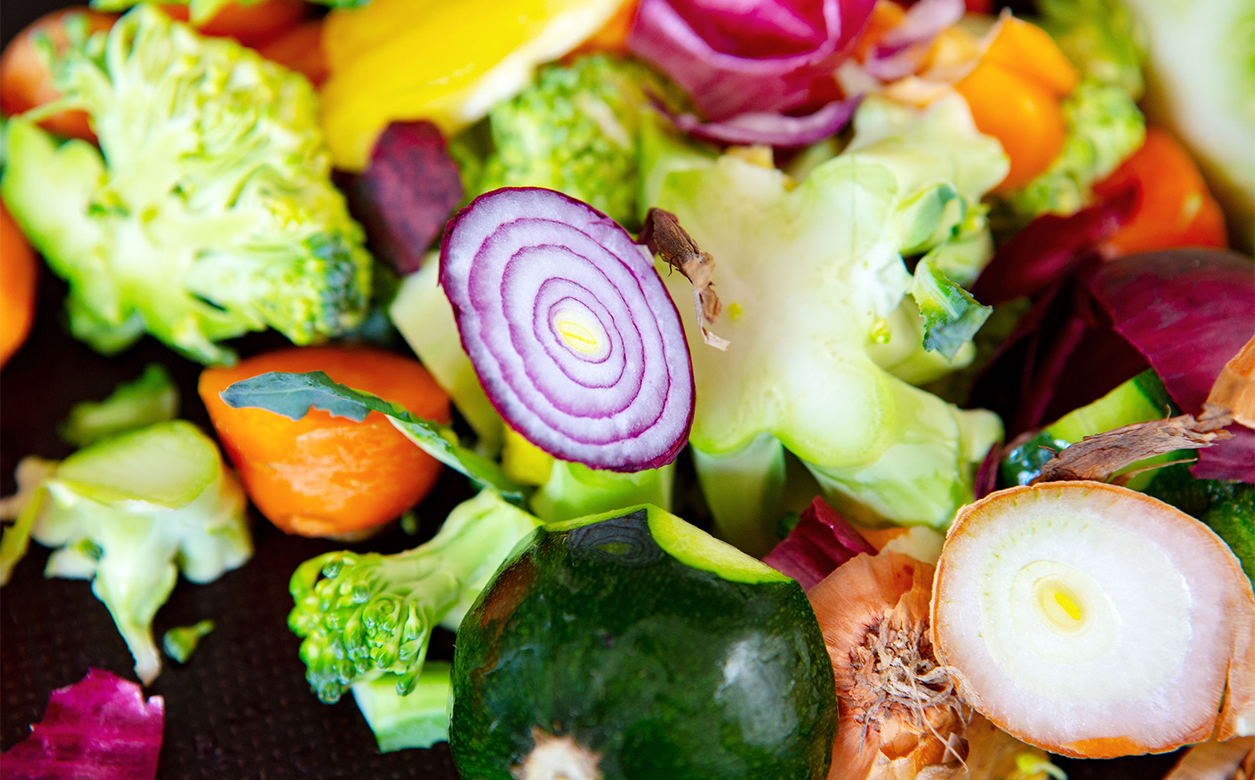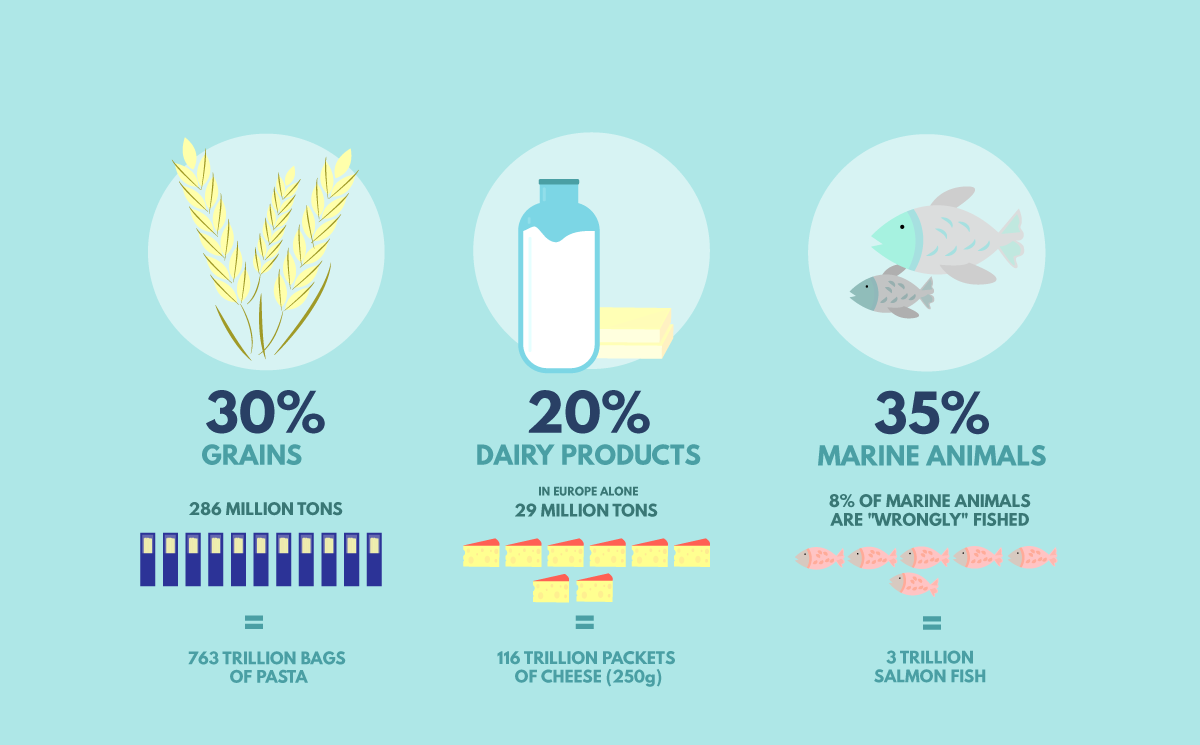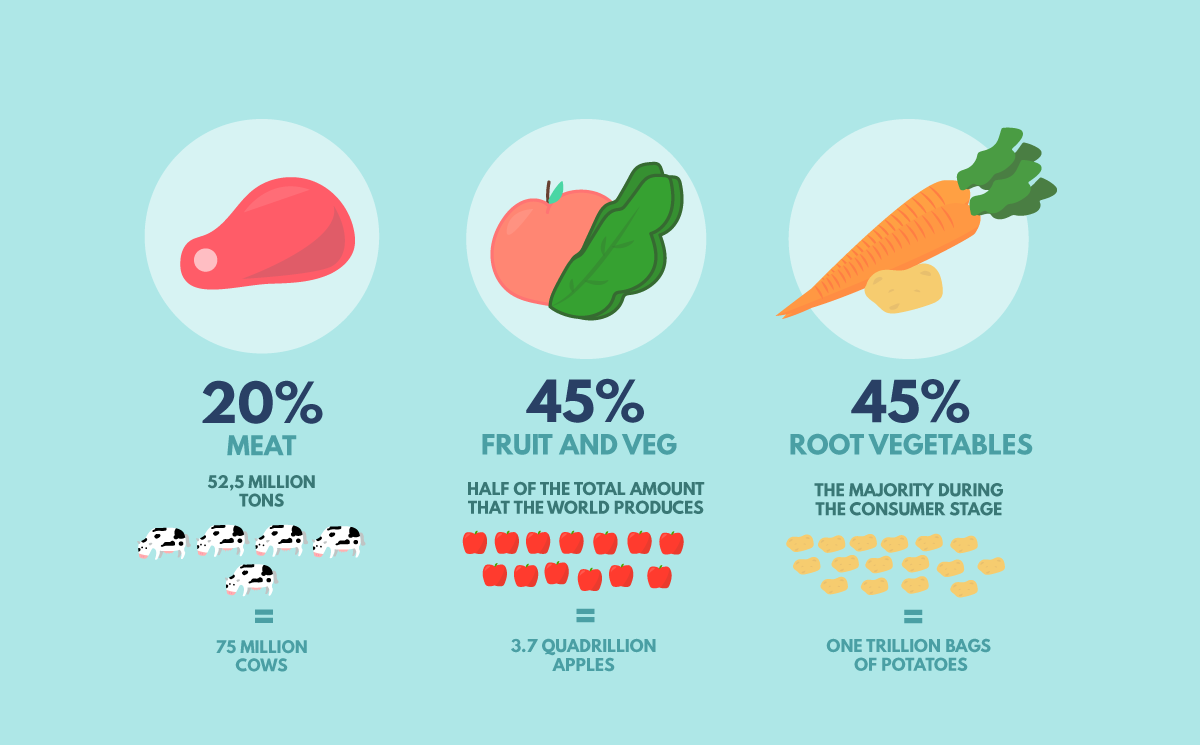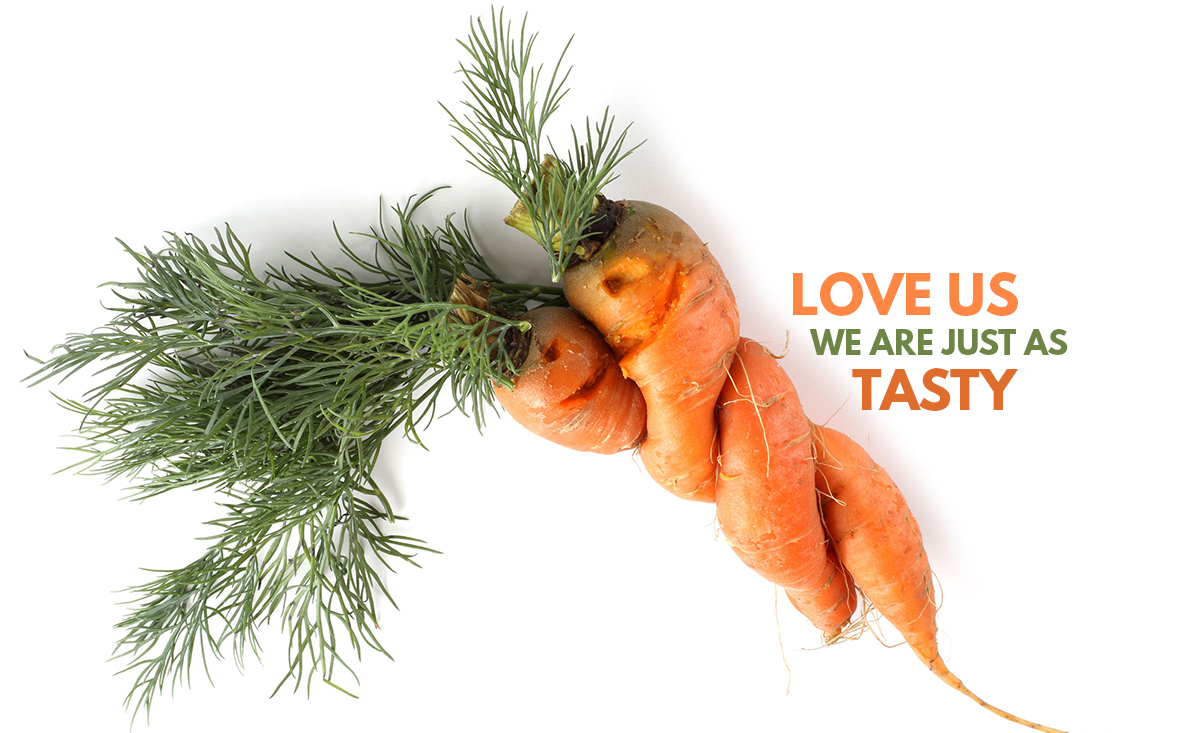
The United Kingdom is the country with the highest food waste. Mostly made up of fruit, vegetables, and baked goods.
You’ve got to do a food shop and rush to the supermarket: you find the bananas that are on offer and take 2kg to make the most of it. As you pass the vegetable isle, you fancy making some salads, so you add a variety of veg to your trolley. As you pass the bakery, you can’t remember if there was bread left at home, so you take some just in case.
One week later… half the bananas have gone dark, squishy and overripe. You don’t like them, so you throw them away. The lettuce is wilted, and you can no longer put them in a salad, so you throw them away. Along with some old carrots and peppers that have gone off. On top of that, it turns out you did have some bread back at home, but now it’s gone mouldy- straight in the bin!
It’s hard to see in writing, but it’s close to our reality, right? We top this off with the bits of fruit and veg that ‘were going off’ and we threw away, and the carrot, cucumber, apple peel etc. Which we’ve been taught to peel from a young age.
Now imagine this, multiplied by the millions of people in the world. Can you believe how many people you could feed with this waste?
It is estimated that we could feed the 870 million people suffering from malnutrition in the world. (2)
The alarming thing is that, people from higher economically developed countries waste almost as much food as Sub-Saharan Africa’s food net production. This is equivalent to 230 million tons.
1/3 of all the food in the world is lost or wasted. That is to say: 1.3 billion tons. (3)
Food loss vs Food waste?
Food loss can happen at any point throughout nutrition’s life cycle, but it generally happens during the harvest process or production. It’s often due to factors such as; climate, lack of technology or adequate storage systems, transport problems, ruptures in the cold chain, pest infestations etc.
Food waste refers to food that was thrown away despite being perfectly edible at a given point in time. The term is often used when referring to retailers or consumers. It is generally a result of high demand and requisites that are very hard to meet, or appearance standards that aren’t directly related to the true quality of the product. (4)
In fact, consumer food waste in Europe varies from 95 to 115 kg per person each year. While these statistics are just from 6 to 11 kg per year in the South of Asia.
These are the following countries in the EU with the highest amount of food waste:
- United Kingdom in 1st place with 14.4 million tons
- Germany in 2nd place with 10.4 million tons
- Holland in 3rd with 9.4 million tons
- France follows closely with 9 million tons
- Poland with a total of 8.9 million tons
- Italy with 8.8 million tons
- Spain in 7th place with 7.7 million tons
An Environmental Problem:
By 2030, it is estimated that the total food waste costs could reach 600 billion dollars. While the resources are decreasing every year and potable water sources are reducing, the price of general nutrients and food is increasing.
As consumers in a more developed economic country, we have a strong impact on the price of food products. A large part of the food that we consume originates in third world countries, meaning that not only does it raise production prices, but it exploits the land -that should be used to harvest food for native populations – putting it under very demanding requirements that don’t allow the lands to recover, causing degradation of natural habitats.
So, it’s not only an economic problem, it’s an ethical and social one too. Considering that 2.5 million children die every year as a result of malnutrition while we waste millions of tons of food products in our homes. (2)
All these children could be fed with less than half of the food products that we waste. Doesn’t sound very fair, does it?

The problem is also yours:
Even though retailers and supermarkets are responsible of a high percentage of these losses, consumers are responsible for 42% of the total amount of food waste.
According to the FAO (3)
- 30% of the cereal produced in the world is lost every year. This equates to 763 billion packets of pasta. In Europe, more than half of them are lost in the consumption stage, in other words, due to consumers' irresponsibility.
- 20% of dairy products are also wasted, although these figures correspond mostly to North America and Oceania. In Europe this is the equivalent to 29 million tons of dairy products. If we take the environmental impact of the production of these products into consideration, these numbers are really worrying.
- Similarly, 55% of the meat produced worldwide is wasted every year. 35% of the latter comes from marine animals. In many cases, fishing has become an unsustainable practice since large fishing nets cannot be selective, so 8% of the marine animals that are trapped in these nets are returned to the sea, since they are not considered "useful". However, most of them are already dead or extremely injured at this time.
- But the prize goes to fruits and vegetables with an extremely high amount of waste each year. 45% of all fruits and vegetables produced worldwide are wasted at different stages of production and consumption. That's 3.7 trillion apples. While root vegetables such as potatoes and carrots have an equally alarming loss rate (45%) especially in North America and Oceania. Can you imagine how many potatoes it corresponds to? FAO has the answer: more than 1 billion bags of potatoes.

What can you do?
Accepting our responsibility and trying to do our bit to solve this problem is the first step. While we can and should demand better practices from food industries and producers, as well as supermarkets, here are some measures you can take to prevent it:
- Plan your meals in advance: Decide what recipes you will prepare and what ingredients you need, check your fridge to take advantage of the foods you still have available and write your shopping list. Sticking to it and avoiding the temptation of promotions will help you carry the amount of food you need and no more.
- Reinvent and be creative: Learn to love your leftovers, try using leftover vegetables or dishes that have been forgotten in your fridge in a creative recipe before making the purchase. There are thousands of online options to inspire you.
- Forget beauty standards: Love all fruits and vegetables equally, often those that’re more mature, deformed or strange looking are those that taste better. Remember that your purchase is a vote, if you never choose triplet carrots or ripe bananas this will be a signal to supermarkets and will cause them to continue rejecting these kinds of fruits and vegetables from farmers.

- Do not trust the expiration date: This date is an estimate, and usually indicates the date from the time that the product will begin to lose quality, but does not always indicate that it is not suitable for consumption, better follow your instinct and your sense of smell.
- Do not dissect your vegetables and fruits: small black spots or imperfections on the skin are normal, you should not always remove them. The peels tend to concentrate a greater amount of nutrients, if you buy organic and wash them well there is no need to peel them.
- Make soup: A great way to use the peels you've removed, the carrot tips or the pepper hearts is to wash them well and freeze them to later make a soup with them. I promise it will taste delicious!
- Freeze and store: Being aware of the state of your food is essential to avoid waste, so you can act before it's too late. You can freeze peeled bananas for ice cream, freeze your leftovers for emergencies: stews are perfect for this.
- Compost: Look for local compost bins, consult farmers or your nearest organic store. You can also have a compost bin at home, where you can dispose of all your fruit and vegetable waste and reduce the amount of methane gas produced by these foods in landfills.
- You can also donate your meals to food banks for people in need, never underestimate the number of people who will be happy to receive food that is no longer satisfying for you. Not only will you be helping others, but you will be contributing to the care of the planet.
- Are you ready to make a difference? Together we can!
- 1. Ministry of Agriculture, Fishing and Food, Government of Spain, "Estrategia más alimento, menos desperdicio" Retrieved from: https://www.mapa.gob.es/es/alimentacion/temas/estrategia-mas-alimento-menos-desperdicio/Definiciones_cifras.aspx
- 2. Food and Agriculture Organization (FAO), Globally almost 870 million chronically undernourished - new hunger report. Retrieved from: http://www.fao.org/news/story/en/item/161819/icode/


